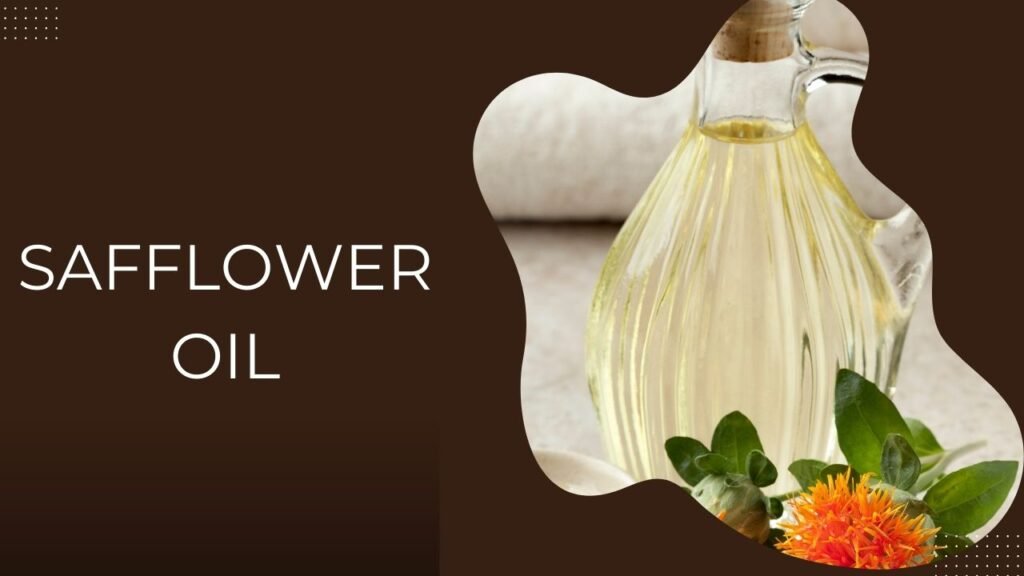Have you ever wondered, which cooking oil has lowest calories, especially when you’re trying to maintain a healthy diet? Cooking oils are essential in our kitchens, adding flavor and texture to our favorite dishes. However, not all oils are created equal when it comes to calorie content. Making informed choices about which oil to use can make a significant difference in your overall caloric intake and health goals. Let’s explore the world of cooking oils, uncovering which ones are the lightest on calories and how you can incorporate them into your meals without compromising on taste or nutrition.
Why Calorie Count Matters in Cooking Oils
The Role of Cooking Oils in Your Diet
Cooking oils are a primary source of dietary fats, which are crucial for various bodily functions, including hormone production, nutrient absorption, and cell structure. However, fats are also calorie-dense, providing about 9 calories per gram. This means that even small amounts can contribute significantly to your daily caloric intake.
Balancing Taste and Health
Finding the right balance between flavor and health is key. While oils like olive and coconut bring distinct flavors to dishes, they can also pack more calories. On the other hand, lighter oils might offer fewer calories but lack the same depth of flavor. Understanding which cooking oil has lowest calories helps you make choices that align with both your culinary preferences and health objectives.
Which Cooking Oil Has Lowest Calories?
Exploring the Caloric Landscape
When it comes to identifying the cooking oil with the lowest calories, it’s essential to recognize that most oils have a similar caloric density. However, portion control and cooking methods can influence the total calorie intake from oils. Here are some oils that are generally considered lower in calories or offer benefits that can aid in reducing overall caloric consumption:
- Cooking Spray (Non-Stick)
- Canola Oil
- Safflower Oil
- Sunflower Oil
- Grapeseed Oil
- Rice Bran Oil
- Light Olive Oil
Table: Caloric Content of Common Cooking Oils
| Cooking Oil | Calories per Tablespoon | Best Uses |
|---|---|---|
| Cooking Spray | 0-10 | Non-stick cooking, baking |
| Canola Oil | 120 | Frying, baking, sautéing |
| Safflower Oil | 120 | High-heat cooking, salads |
| Sunflower Oil | 120 | Frying, baking, dressings |
| Grapeseed Oil | 120 | Sautéing, grilling, dressings |
| Rice Bran Oil | 120 | Stir-frying, baking, deep-frying |
| Light Olive Oil | 120 | General cooking, light sautéing |
Note: Cooking spray is considered to have the lowest calories per use, often contributing negligible calories when used correctly.

Cooking Spray: The Calorie-Conscious Choice
Why Choose Cooking Spray?
Cooking sprays are an excellent option if you’re aiming to minimize calorie intake from oils. They provide a thin, even layer of oil, significantly reducing the amount used compared to pouring oil directly from the bottle.
How to Use Cooking Spray Effectively
- Non-Stick Cooking: Perfect for baking sheets, pans, and grills to prevent sticking without excess oil.
- Portion Control: Spray lightly to avoid using more oil than necessary, helping you stay within your calorie goals.
- Versatile Applications: Use in a variety of cooking methods, from roasting vegetables to grilling meats.
Tips for Maximizing Benefits
- Choose Low-Calorie Sprays: Look for sprays labeled as low-calorie or with minimal added ingredients.
- Combine with Other Techniques: Use cooking spray in conjunction with other non-stick methods, such as parchment paper or silicone mats, for even better results.
Canola Oil: A Balanced Option
Why Canola Oil?
Canola oil is a popular choice among health-conscious individuals due to its balanced fat profile and relatively lower calorie content compared to some other oils. It contains a good amount of monounsaturated fats and omega-3 fatty acids, which are beneficial for heart health.
Culinary Uses of Canola Oil
- Frying and Sautéing: Its high smoke point makes it suitable for various cooking methods without breaking down.
- Baking: Canola oil can be used as a substitute for butter or margarine in baking recipes, providing moisture without adding excessive calories.
- Salad Dressings: Its neutral flavor allows it to blend seamlessly into dressings and marinades.
Nutritional Profile
- Calories: Approximately 120 calories per tablespoon.
- Fat Composition: Low in saturated fats, high in monounsaturated and polyunsaturated fats.
- Additional Benefits: Contains omega-3 and omega-6 fatty acids, supporting heart health and reducing inflammation.
Safflower and Sunflower Oils: Light and Versatile

Safflower Oil
Safflower oil is another excellent choice for those monitoring their calorie intake. It is low in saturated fats and high in unsaturated fats, making it a heart-healthy option.
Best Uses
- High-Heat Cooking: Suitable for frying and deep-frying due to its high smoke point.
- Salads and Dressings: Adds a light texture without overpowering flavors.
Sunflower Oil
Sunflower oil is known for its light taste and high smoke point, making it a versatile addition to any kitchen.
Best Uses
- Frying and Baking: Perfect for a variety of cooking methods without adding extra calories.
- Roasting Vegetables: Helps in achieving a crispy texture with minimal oil.
Comparative Table: Safflower vs. Sunflower Oil
| Aspect | Safflower Oil | Sunflower Oil |
|---|---|---|
| Calories | 120 per tablespoon | 120 per tablespoon |
| Smoke Point | 450°F (232°C) | 440°F (227°C) |
| Flavor | Neutral, light | Mild, neutral |
| Best Uses | High-heat cooking, dressings | Frying, baking, roasting |
| Health Benefits | High in unsaturated fats, low in saturated fats | High in vitamin E, low in saturated fats |
Grapeseed Oil: Light and Nutritious
Benefits of Grapeseed Oil
Grapeseed oil is valued for its light texture and high smoke point, making it ideal for a range of cooking applications. It is also rich in vitamin E and polyunsaturated fats, contributing to its health benefits.
Culinary Applications
- Sautéing and Stir-Frying: Perfect for quick-cooking methods that require high heat.
- Baking: Adds moisture to baked goods without altering their flavor.
- Dressing and Marinades: Enhances the texture of dressings while keeping calories in check.
Storage Tips
Grapeseed oil should be stored in a cool, dark place to preserve its delicate flavor and prevent oxidation.
Rice Bran Oil: A Low-Calorie Wonder
Why Rice Bran Oil?
Rice bran oil is gaining popularity due to its mild flavor and health benefits. It contains antioxidants like oryzanol, which can help lower cholesterol levels and improve heart health.
How to Use Rice Bran Oil
- Deep-Frying: Its high smoke point makes it ideal for deep-frying without adding excess calories.
- Baking: Use in recipes that require a neutral-flavored oil to maintain the intended taste of the dish.
- General Cooking: Suitable for a wide range of cooking methods, from sautéing to stir-frying.
Nutritional Insights
- Calories: Approximately 120 calories per tablespoon.
- Fat Composition: Low in saturated fats, high in monounsaturated and polyunsaturated fats.
- Health Perks: Contains antioxidants that support overall health and well-being.
Light Olive Oil: The Heart-Healthy Choice
Benefits of Light Olive Oil
Light olive oil differs from extra virgin olive oil in its refining process, resulting in a milder flavor and higher smoke point. It retains some of the health benefits of olive oil while being more versatile for various cooking methods.
Best Uses
- High-Heat Cooking: Suitable for frying and grilling due to its higher smoke point.
- Baking: Provides a subtle olive flavor without overpowering other ingredients.
- General Cooking: Ideal for sautéing vegetables and meats with a light touch.
Nutritional Profile
- Calories: Around 120 calories per tablespoon.
- Fat Composition: Rich in monounsaturated fats and contains antioxidants.
- Health Benefits: Supports heart health and reduces inflammation.
Comparing the Lowest Calorie Cooking Oils
Table: Low-Calorie Cooking Oils Comparison
| Cooking Oil | Calories per Tablespoon | Smoke Point (°F) | Best Uses | Health Benefits |
|---|---|---|---|---|
| Cooking Spray | 0-10 | Varies | Non-stick cooking, baking | Minimal calories, reduces fat intake |
| Canola Oil | 120 | 400°F | Frying, baking, sautéing | Heart-healthy fats, omega-3 rich |
| Safflower Oil | 120 | 450°F | High-heat cooking, salads | Low in saturated fats, vitamin E |
| Sunflower Oil | 120 | 440°F | Frying, baking, roasting | High in vitamin E, heart-healthy |
Practical Tips for Reducing Calorie Intake from Cooking Oils
1. Use Measuring Spoons
Instead of pouring oil directly from the bottle, use a measuring spoon to control the amount you use. This simple step can significantly reduce your calorie intake.
2. Opt for Non-Stick Cookware
Using non-stick pans allows you to use less oil while cooking. You can achieve the same results with minimal or no oil, especially when baking or sautéing vegetables.
3. Incorporate Oil Alternatives
Consider using broth, water, or vinegar in recipes that typically require oil. These alternatives can add moisture and flavor without adding extra calories.
4. Choose Cooking Methods Wisely
Grilling, steaming, baking, and roasting are cooking methods that often require less oil compared to frying or sautéing.
5. Combine Oils with Other Healthy Ingredients
Mix oils with herbs, spices, and other flavorings to enhance the taste of your dishes without needing to add more oil.
Flavor and Culinary Uses of Low-Calorie Oils
Balancing Flavor and Health
Finding the right oil that offers both flavor and lower calories can enhance your cooking experience while keeping your diet in check. Here are some ideas:
- Salad Dressings: Use light olive oil or grapeseed oil for a flavorful yet low-calorie dressing.
- Stir-Fries: Canola oil or safflower oil works well for stir-fries, providing the necessary fat without adding too many calories.
- Baking: Substitute butter with light olive oil or canola oil in baking recipes to reduce calorie content while maintaining moisture.
Enhancing Dishes with Minimal Calories
- Drizzling: Use cooking spray to lightly drizzle over roasted vegetables or meats.
- Marinating: Combine low-calorie oils with vinegar, herbs, and spices to create healthy marinades.
- Finishing Oil: Add a splash of walnut oil or hemp seed oil to finished dishes for an extra layer of flavor without excess calories.
Environmental and Ethical Considerations
Sustainable Choices
When selecting cooking oils, consider the environmental impact of their production. Opting for sustainably sourced oils can help reduce your ecological footprint.
Ethical Sourcing
Choose oils that are certified organic, fair trade, or non-GMO to ensure ethical production practices and support sustainable farming.
Table: Sustainability and Ethical Certifications
| Certification | What It Ensures | Common Oils |
|---|---|---|
| Organic | No synthetic pesticides or fertilizers | Canola, flaxseed, walnut |
| Fair Trade | Ethical labor practices | Coconut, avocado |
| Non-GMO | No genetically modified organisms | Canola, soybean |
| PDO (Protected Designation of Origin) | Traditional production methods | Olive oil |
Personal Reflections: My Journey to Lower-Calorie Cooking
Switching to low-calorie cooking oils was a game-changer for my health and culinary adventures. I used to pour oil generously when sautéing vegetables, but after learning which cooking oil has lowest calories, I started measuring and using cooking spray instead. Not only did I notice a positive change in my calorie intake, but the dishes also retained their flavor without feeling greasy. Embracing these healthier oil options has made cooking more enjoyable and aligned with my health goals.
FAQs About Which Cooking Oil Has Lowest Calories
1. Is cooking spray truly calorie-free?
While cooking spray is not entirely calorie-free, it contains significantly fewer calories compared to traditional oils. A single spray can add as few as 5 calories, making it a great option for reducing overall calorie intake.
2. Can I use non-stick pans without any oil?
Yes, many non-stick pans allow you to cook without any oil. However, adding a small amount can enhance flavor and texture. Using cooking spray or minimal oil can help maintain the non-stick surface while keeping calories low.
3. Are all low-calorie oils healthy?
Most low-calorie oils offer health benefits, but it’s essential to consider their fat composition and how they fit into your overall diet. Oils rich in monounsaturated and polyunsaturated fats, like canola and grapeseed oil, are generally healthier choices.
4. How can I store low-calorie cooking oils to maintain freshness?
Store oils in a cool, dark place away from direct sunlight and heat sources. Using airtight containers and keeping oils in the refrigerator can help preserve their freshness and prevent oxidation.
5. Can using less oil affect the taste and texture of my dishes?
Using less oil might slightly alter the texture and flavor of your dishes, but with the right techniques and oil choices, you can still achieve delicious results. Experimenting with different oils and cooking methods can help you find the perfect balance.
Table: Best Cooking Oils for Low-Calorie Cooking
| Cooking Oil | Calories per Tablespoon | Smoke Point (°F) | Best Uses | Health Benefits |
|---|---|---|---|---|
| Cooking Spray | 0-10 | Varies | Non-stick cooking, baking | Minimal calories, reduces fat intake |
| Canola Oil | 120 | 400°F | Frying, baking, sautéing | Heart-healthy fats, omega-3 rich |
| Safflower Oil | 120 | 450°F | High-heat cooking, salads | Low in saturated fats, vitamin E |
| Sunflower Oil | 120 | 440°F | Frying, baking, roasting | High in vitamin E, heart-healthy |
| Grapeseed Oil | 120 | 420°F | Sautéing, grilling, dressings | Rich in vitamin E, polyunsaturated fats |
| Rice Bran Oil | 120 | 450°F | Deep-frying, baking, general cooking | Contains antioxidants, low in saturated fats |
| Light Olive Oil | 120 | 465°F | High-heat cooking, baking, sautéing | Monounsaturated fats, antioxidants |
Final Thoughts
Determining which cooking oil has lowest calories involves more than just comparing numbers; it requires understanding how different oils fit into your cooking methods and dietary goals. From the almost calorie-free cooking sprays to versatile options like canola and grapeseed oils, there are plenty of choices that can help you enjoy flavorful meals without the extra calories. By making informed decisions and incorporating these oils wisely, you can enhance both the taste and nutritional value of your dishes.
Remember, moderation is key. Even the lowest calorie oils should be used mindfully to maintain a balanced and healthy diet. So, next time you’re preparing a meal, consider these low-calorie options and enjoy the perfect blend of taste and health. Happy cooking!


